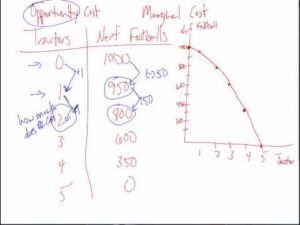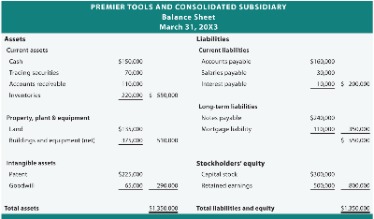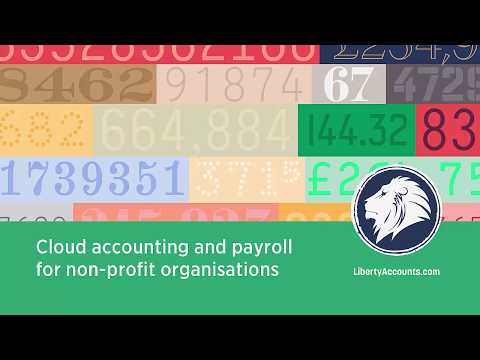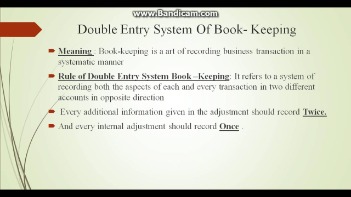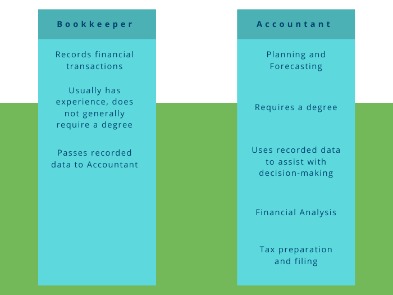Content
- Are you ready to discover your college program?
- Do Bookkeepers Need to Be Licensed?
- National Bookkeepers Association
- What Is Needed to Maintain the Bookkeeping Certification?
- Steps to Become a Certified Public Bookkeeper (CPB)
- QuickBooks Online Accountant
- Job Outlook
- Bookkeeping Certification Salary Potential

They should understand your industry and the unique needs and requirements of small businesses. Bookkeeping is a transactional and administrative role that handles the day-to-day tasks of recording financial transactions, including purchases, receipts, sales and payments. Accounting is more subjective, providing business owners with financial insights based on information gleaned from their bookkeeping data. If you own the business, you’re going to be keeping the books for, learning all you can about how to keep your own finances straight, saving time and money come tax season. When you use QuickBooks Online Accountant, you can join the QuickBooks Pro Advisor program, which offers courses leading to the core or advanced QuickBooks Online Certification.
- Our motive behind developing The Knowledge Review is to provide data relevant to every individual connected to education, i.e., Student, Parents, Professors, and Institute Management.
- The first is looking for job opportunities listed as “Remote,” which offer the possibility to work virtually.
- The course also goes into how to create a smooth and stress-free onboarding experience for clients.
- The best way to prepare for the certified bookkeeper exam is by studying early and thoroughly.
- However, you might hire a CIA if you want a more specialized focus on financial risk assessment and security monitoring processes.
- On course completion, you will receive prepaid voucher to take AIPB Certified Bookkeeper certification exam.
However, on the eighth day, your free trial automatically becomes a paid subscription, unless you cancel the free trial version. View your colleagues’ posts as a guest—or become an AIPB member and to join a discussion or start your own topic. However, getting a degree in your field of interest gives you an advantage over other candidates. Download the Bookkeeper Classes and Certification Chart to compare and contrast each of the eight options we went through today. Each question on the exam counts equally toward the final score for that section.
Are you ready to discover your college program?
The first is the American Institute of Professional Bookkeepers (AIPB), and the second is the National Association of Public Bookkeepers (NACPB). Both offer similar benefits regarding membership, resources and renewable credentials. While other bookkeeping credentials do exist, those offered by AIPB and NACPB are the most renowned and respected. Bookkeepers seeking the CPB license must complete all portions of the exam online. Those seeking the CB credential must schedule in-person appointments at a Prometric testing center. Professionals looking to brush up on bookkeeping fundamentals can enroll in this introductory course from edX.
Besides, you can register with a recognized traditional college offering related courses. When I was starting out, I took on a few of my own clients, but I also took on a client where I was an employee for their company and went into the office once a week. It was a really great way for me to learn hands-on from professionals who knew what they were doing.
Do Bookkeepers Need to Be Licensed?
Upon enrollment in the course, if you do not like the course, you can receive a full refund minus the costs of materials. The first is looking for job opportunities listed as “Remote,” which offer the possibility to work virtually. Second, you can work for yourself as a freelance bookkeeper and market yourself as a virtual https://www.bookstime.com/articles/certified-bookkeeper or “remote” bookkeeper. According to PayScale.com, bookkeepers earn on average $17.37 per hour. Accountants will either quote a client a fixed price for a specific service or charge a general hourly rate. Basic services could cost as little as $20 an hour, while advanced services could be $100 or more an hour.
![]()
Our motive behind developing The Knowledge Review is to provide data relevant to every individual connected to education, i.e., Student, Parents, Professors, and Institute Management. The course is priced at $1497 for a one-time payment, or you have an option to make nine monthly payments of $187. If you choose the payment plan, you will receive access to one lesson each month.
National Bookkeepers Association
The first is by applying at the National Association of Certified Bookkeepers (NACPB). The other way is via the American Institute of Professional Bookkeepers (AIPB). The US Bureau of Labor Statistics (BLS) predicts the job market for bookkeepers to decline by about 3% between 2020 and 2030.
- When I was starting out, I took on a few of my own clients, but I also took on a client where I was an employee for their company and went into the office once a week.
- Download the Bookkeeper Classes and Certification Chart to compare and contrast each of the eight options we went through today.
- If a bookkeeper sent you to this page to find out more about the Pure Bookkeeping system, you can let that person know you’re ready to get started.
- You will handle expenses, receipts, payables, and accounts receivable.
- When your small business’s bookkeeping and accounting tasks are too much to handle by yourself, it’s time to hire help.
- Before becoming a consultant, Wade was Divisional Controller for one of the leading health and fitness club chains in the world.
- Regardless of whether you are pursuing credentials through AIPB or NACPB, your supervisor or a former employer must validate your experience hours.
Certification, such as Certified Bookkeeper, demonstrates competency based on a national and industry-recognized standard. It also allows you to include the “C.B.” designation after your name, signifying that you have met the demanding requirements to earn this credential. As a bookkeeper, you will be in charge of keeping accurate financial records for one or more financial organizations.

